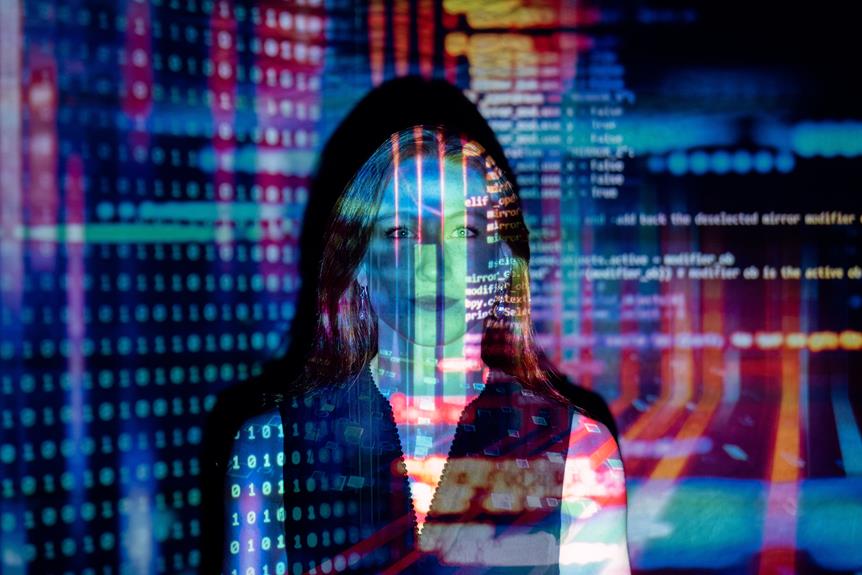They say beauty is in the eye of the beholder, but what if the beholder is artificial intelligence?
The recent study on AI imagining 'beautiful women' in 100 countries around the world has sparked intriguing discussions about the intersection of technology and cultural diversity.
As we delve into this topic, we will explore the implications of AI-generated content, the challenges of defining beauty, and the potential of artificial intelligence in capturing the nuances of different cultures.
But what does it mean when AI becomes the arbiter of beauty?
Let's explore.
AI's Cultural Nuances and Beautiful Women
AI's ability to capture cultural nuances is evident in its portrayal of beautiful women from around the world. Through AI-generated images, we can see the impact of AI on cultural representation and its influence on beauty standards.
The AI prompt used in this study was carefully crafted to guide the AI in generating images without biases. As a result, the AI successfully tailored the attire in the images to align with each country's cultural background.
For instance, women in Middle Eastern countries were depicted wearing hijab, while women in African countries appeared wearing headscarves. However, it's important to note that AI's output reflects the patterns it identifies in the data created by humans.
Therefore, it's crucial for humans to ensure that the data fed into AI systems represents a diverse range of perspectives to avoid upholding unrealistic beauty standards.
Diverse Beauty Standards and AI's Role
Diverse beauty standards are a complex and ever-evolving concept, and AI plays a significant role in shaping and influencing these standards.
AI's impact on beauty standards is worth exploring, as it has the potential to both promote inclusivity and reinforce certain preferences.
The AI used in the study successfully captured cultural nuances by tailoring the attire of the women in the generated images to align with each country's background.
However, the AI consistently produced images of women who appear relatively thin and put together, reflecting certain biases.
While AI can capture diverse beauty standards, it also reveals preferences related to body types and cultural associations.
It's crucial for humans to ensure that the data fed into AI systems represents a diverse range of perspectives to avoid upholding unrealistic beauty standards.
Defining Beauty on Your Terms
When it comes to defining beauty, each individual has the power to set their own standards and embrace their unique aesthetic preferences. In a world where AI-generated content is shaping our perceptions of beauty, it's essential to redefine standards and embrace individuality. Here's how we can do it:
- Challenge societal norms: Break free from traditional beauty ideals and embrace diverse body types, ethnicities, and cultural backgrounds.
- Embrace self-expression: Celebrate individuality by exploring different styles, makeup looks, and fashion choices that make you feel confident and authentic.
- Promote inclusivity: Support brands and platforms that prioritize diversity and provide spaces for individuals to express themselves without judgment or limitations.
Methodology of the AI Study
As we explore the methodology of the AI study, it's important to understand the process by which AI-generated content is created and the implications it carries.
The study utilized an AI image generator called Midjourney to produce the images of 'beautiful women' in 100 countries. The AI prompt provided specific details such as camera type, lens, aspect ratio, and image quality to ensure realistic results.
From each prompt, Midjourney generated four images, and the study selected one representative image based on criteria like full bodies, neutral backgrounds, realistic appearance, and preference for the top-left image.
However, it's crucial to acknowledge the limitations of AI-generated content. AI reflects the patterns identified in the data it's given, which is created by humans. Therefore, ensuring diversity in the data fed into AI systems is essential to avoid upholding unrealistic beauty standards.
-What Are the Common Features of “Beautiful Women” According to AI and How Can These be Reflected in an Esthetician Bio?
According to AI, common features of “beautiful women” include symmetrical faces, clear skin, and expressive eyes. To reflect this in an esthetician bio, highlight expertise in enhancing natural beauty, skin rejuvenation techniques, and tips for esthetician bio. Emphasize a passion for helping clients feel confident and beautiful in their own skin.
Implications of AI-generated Content
AI-generated content carries significant implications that need to be critically examined and addressed. The impact of AI on body image perceptions and the importance of diverse representation in AI-generated content are crucial aspects to consider.
- AI's influence on body image perceptions: AI consistently produces images of women who appear relatively thin and put together, which can reinforce unrealistic beauty standards. This can negatively impact individuals who don't fit this body type and perpetuate harmful body image ideals.
- The need for diverse representation: It's essential to ensure that AI systems are fed with diverse data that represents a range of perspectives. This includes representing various body types, cultural clothing, and beauty standards. Without this diversity, AI-generated content may continue to uphold and reinforce narrow beauty ideals.
- Responsibility lies with humans: Humans have the responsibility to actively curate and provide inclusive data that challenges biases and promotes diverse representation. Brands like StyleSeat, which embrace diversity in the beauty industry, are leading the way in creating platforms that empower individuals to define their own aesthetic standards.
It is crucial to critically evaluate and address these implications to ensure that AI-generated content promotes inclusivity and positive body image perceptions.
